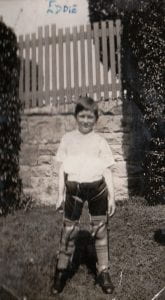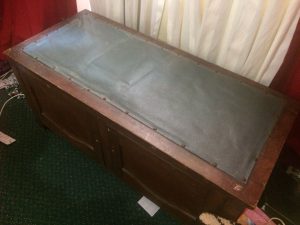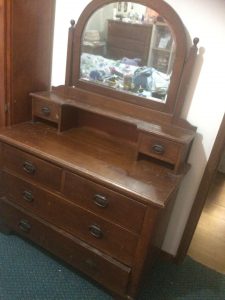The prompt for Week 5 was ‘Influencer’ and for this prompt I’ve decided to write about my Great-Uncle Ted who was a strong influence on my family history journey. As my mother grew up without a Father, Uncles were very important to her and she was very close with her mother’s family. Although Ted lived in Adelaide, South Australia and my mum grew up in Western Sydney the strong connection was still there and he was the person who gave my mum away at her wedding.

The photo of Ted and Jean (my grandmother) that sparked my interest)
I can remember visiting Ted for the first time as a young teenager, and I was fascinated by all his knowledge of the family. I had seen photos of my grandmother as a young child aged around 3 years old in Penrith, New South Wales (which in the 1920s was still a very country area) as well as a photo of my great grandparents wedding day and they had sparked my interest enough to ask my grandmother about them. So you can imagine I was even more fascinated to see the many other photos that Ted had in his possession, including one of himself and my grandmother, when he was a small boy and she a toddler. This visit was to be the start of years of back and forth correspondence about the family history.

Ted (standing) and Jean
Ted had started doing family history research during the 1980s, when Australia experienced a surge of popularity in family history research in line with the Bicentenary of the landing of the First Fleet in 1788. Unlike the rest of his family, who worked in more traditional ‘working class’ professions, Ted had trained as a journalist and ended up working in Sports Journalism. As a boy, Ted had suffered from polio and as a result spent much more time on academic pursuits. Through the charity organisation The House With No Steps Ted was taught typing which was a great help to him eventually getting a cadetship in journalism and eventually working as a sports journalist. During his career, Ted had opportunities to travel overseas and I have not doubt that the research skills he learnt in his journalism career came in handy for tracing his family history. Once retired, Ted continued to travel with his wife Ruth and he visited many of the areas out ancestors came form including Norway.
Many of the family photos that I have copies of came from Ted’s family album which he was happy to share with me. And not only did he have photos of ancestors, they were all meticulously labelled. Ted had also painstakingly typed up on his typewriter everything he knew about the family from what he had been told by his mother and other relatives as well as what he had gleaned form his research. I remember quite well a conversation about our Norwegian ancestor Charles John Thompson who had come from the Norwegian city of Bergen out to Australia. I can remember him telling me about when he visited Norway and attempted to find some information about Charles to no avail. Everyone they spoke to said that there would be no Norwegian with that kind of name! Ted was very interested years later once I had started my family history journey in earnest to hear that I had found Charles in Norway!! Turns out, he had Anglicized his name to Charles John Thompson from Karl Johan Thomassen.

Ted during his time at Canonbury hospital







